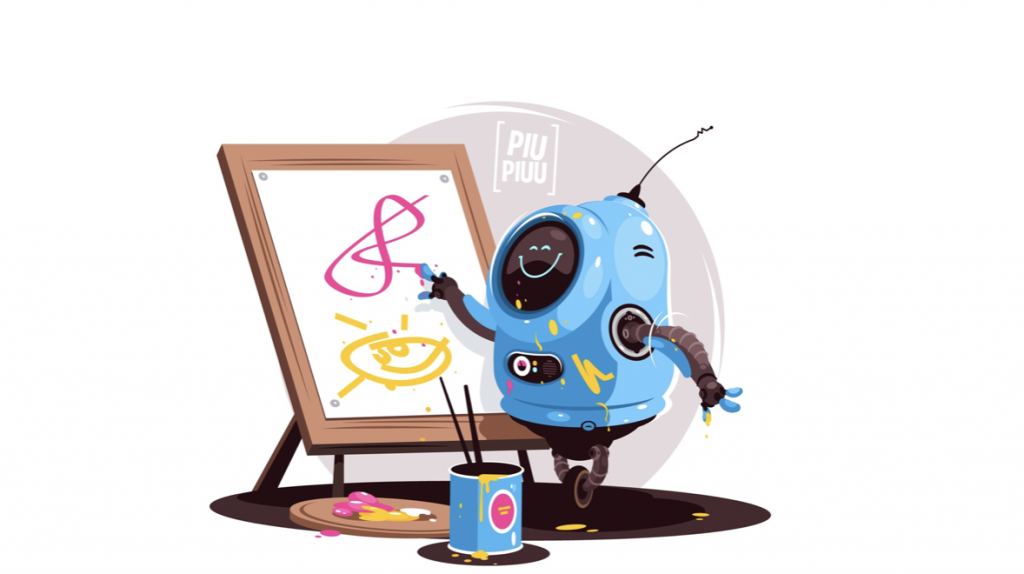
By: Nicholas Barrish
In a recent decision, the U.S. District Court for the District of Columbia in Thaler v. Perlmutter, found that a work entirely made and authored by artificial intelligence cannot receive copyright protection.[1]. The Court ruled that human authorship is a critical key part of what allows a work to fall under copyright protection. [2].The registration of copyright form, filed by the defendant, Thaler, listed his AI machine as the author.[3] The court found such a work cannot have copyright protection as there was no human input even considering that Thaler made the computer program and had to prompt the machine to act.[4] However, Thaler’s lawyer has indicated the possibility of an appeal making this issue for further debate.[5] This case will be the first of many testing the copyright protection of AI-made works as there still exists many questions like how much AI is too much to copyright a work or how can a business use AI while still protecting their investments.
How much AI is too much AI? How much human is too little human?
It should be noted that Thaler is limited to AI work with no human intervention.[6] In other words, in a case where there exists some human intervention, the outcome may be different. This is an important distinction because the copyright office has stated that “AI-generated content that is more than de minimis should be explicitly excluded from the application.”[7] However, this limit is blurry.[8] It is especially blurry, considering the back-and-forth the Copyright Office had with the registration of Zarya of the Dawn, where AI made pictures for a graphic novel and the pictures were deemed to not have copyright protection, and determining if the work was created by artificial intelligence.[9] In addition, it is also unclear when AI and human work are more intertwined if copyright protection can be given to the work.[10] In Zarya of the Dawn, the AI-made pictures could be distinguished and allow solely that part to not fall under copyright protection.[11]. However, if the AI edits a photograph or a human edits an AI-drawn painting, then the line of what is protected, if anything at all, is unknown and will need to be decided in the courts.[12].
Impact on Businesses and their Attempts to Copyright AI Work
As the recent writer strike has shown, AI involvement in creativity is a hotly contested issue. [13]. Writers want AI to be limited, while companies want to use AI to speed up creativity and even art-making processes.[14]. However, the introduction of Thaler limits how far companies can go. If AI writes a movie or book, that work will not fall under copyright protection. [15]. However, such protection may soon be expanded. Many governments are interested in AI and its advancements and how to control it or expand it. [16]. So far, The United Kingdom has taken a friendlier approach to computer-generated content, allowing works that may fall outside of copyright protection in the United States to have such protection in the United Kingdom. [17]. However, early optimism in the United Kingdom has started to turn to apprehension as AI became very powerful very quickly. [18] As the public opinion starts to turn against AI being involved in works it will become harder and harder to use it to create art. As such businesses will have to stay on top of current laws and court decisions as the field changes and the public reacts to such laws and works published.
_____________
[1] Thaler v. Perlmutter, No. CV 22-1564 (BAH), 2023 WL 5333236, at *7 (D.D.C. Aug. 18, 2023).
[2] Id.
[3] Id. at *1.
[4] Id. at *3-6.
[5] Copyright Protection in AI-Generated Works Update: Decision in Thaler V. Perlmutter, Authors Alliance (Aug. 24, 2023), https://www.authorsalliance.org/2023/08/24/copyright-protection-in-ai-generated-works-update-decision-in-thaler-v-perlmutter/.
[6] Thaler, 2023 WL 5333236, at *6-7.
[7] Copyright Registration Guidance: Works Containing Material Generated by Artificial Intelligence, 88 Fed. Reg. 16190, 16193 (Mar. 16, 2023) (to be codified at 37 C.F.R. pt. 202).
[8] Aaron Moss, What Copyright’s “Unclaimable Material” Rules Mean for Hollywood’s Use of AI, Copyright Lately (Aug. 25, 2023), https://copyrightlately.com/copyright-unclaimable-material-rules-hollywood-use-of-ai/#:~:text=“De%20Minimis”%20Amounts%20of%20AI,t%20need%20to%20be%20disclosed.
[9] Id.
[10] Id.
[11] Id.
[12] Id.
[13] Ashley Cullins and Katie Kilkenny, As Writers Strike, AI Could Covertly Cross the Picket Line, Hollywood Reporter (May 3, 2023), https://www.hollywoodreporter.com/business/business-news/writers-strike-ai-chatgpt-1235478681/.
[14] Id.
[15] Ellen Glover and Brennan Whitfield, AI-Generated Content and Copyright Law: What We Know, Built In (Aug. 23, 2023), https://builtin.com/artificial-intelligence/ai-copyright.
[17] Id.
[18] Carlton Daniel, Joseph Grasser, and James J Collis, Copyright protection for AI works: UK vs US, Lexology (July 12, 2023), https://www.lexology.com/library/detail.aspx?g=a9b81aa1-7243-4f03-890c-7d29f5ccbdd7.
[1] ChatGPT: what the law says about who owns the copyright of AI-generated content, University of Portsmouth (April 17, 2023), https://www.port.ac.uk/news-events-and-blogs/blogs/security-and-risk/chatgpt-what-the-law-says-about-who-owns-the-copyright-of-ai-generated-content
